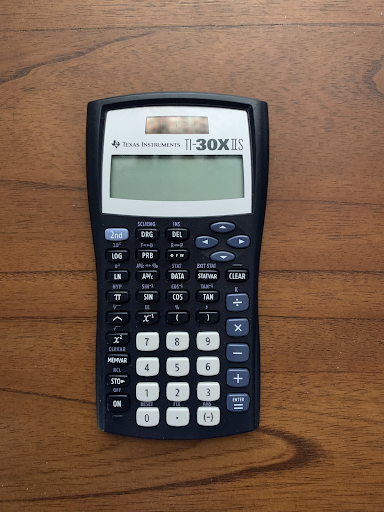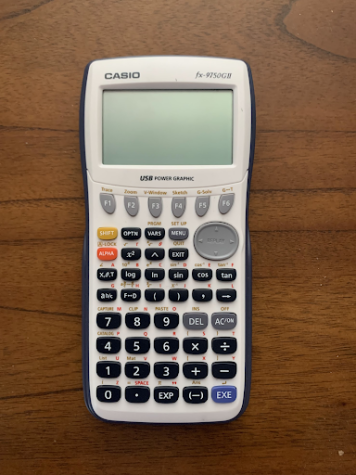The Texas Instruments Monopoly

Scientific calculator (left), graphic calculator (right).

My sophomore year was Covid with a side of school. With this in mind, I didn’t feel as though investing in a graphing calculator was really necessary, and for the first quarter of the school year my gut feeling stood uncorrected. My scientific calculator, a minnow in the sea of sharks, was exceptionally successful.
As much as I would like to, I can’t take the credit for all of my calculator’s success. I was not the first owner of this calculator; I stole it from the math department at the University of Connecticut, Storrs. Clearly, my calculator had helped many students before me. Not only is it a solar-powered computational beast, but also a hero.
On the rare occasion my peers used the graphing feature of their calculators, I sat back and relaxed, bathing in the fluorescent lights of Hall’s most popular vacation destination – the portables. These times were when I found a true appreciation for the field of mathematics: while my classmates were busy being screenagers on their graphing calculators, I was using the genius length x width = area formula to calculate how many ceiling tiles there were.
Then came quarter two, a disaster for my calculator and me. Unfortunately, everyone has to hit some turbulence at some point in their career, and for my calculator it was the end of the first semester, 2020.
My teacher decided to give the class a test that required the use of a graphing calculator. Confident in my ability to live without owning one, I stayed calm. I decided to use one of the school graphing calculators, expecting myself to be tech savvy enough to figure it out.
Low and behold, come the day of the test I realized I was not tech savvy enough to figure it out. The most I could do was draw a random parabola and call it a day. At this point, a reasonable thing to do would be to buy a graphing calculator, but that is the exact opposite of my next move. Instead, I charged forward, still only accompanied by my scientific calculator.
As we know, all good things must come to an end. By the end of quarter three, I decided to buy a graphing calculator (UConn didn’t have any for me to borrow). The calculator that Hall recommended buying is the TI-84, but it didn’t particularly appeal to me. I was in the market for the cheapest graphing calculator I could find, still upset that I even had to purchase one. I ended up opting for a Casio I found on eBay for $20.
Flash forward to the present, and I’ve hit calculator turbulence again. For most of the year, the Casio performed superbly. Anything a Texas Instruments graphing calculator did, the Casio did ten times better (and in a better color scheme). But, as teachers start giving more graphing calculator tutorials, I’ve started facing a dilemma; NO ONE KNOWS HOW TO USE A CASIO GRAPHING CALCULATOR! On multiple occasions, teachers have looked at me with a hint of pity in their eyes, following it up with, “Oooooh a Casio…. I don’t know how to do this on a Casio.”
I finally had enough. As much as I love my Casio, I love convenience more, and my Casio was not convenient. At this point of fragility, I almost buckled and bought a TI-84. Almost. Luckily, I came to my senses; though I do like instruments, I don’t really consider myself a Texas lover. The Lone Star state can stay a loner.
Though my willpower did play a part in my choice to stick with my trusty Casio, one eBay review particularly grounded my decision. Under a TI-84 post, user sammya99 commented, “The calculator is very good, though it should be priced at not more than half of what they charge for it. It costs about the same as a low-end smartphone, yet this calculator can do much, much less. TI essentially has a monopoly on the school market for schools requiring a graphing calculator because, in part, the teachers typically know just the TI devices; so, buying the Casio equivalent for close to half the price doesn’t help the student if the teacher knows only TI.”
These words were the pot of gold at the end of the rainbow for me. I knew I couldn’t abandon my Casio. My calculator has stuck with me through it all, and I’ll stick with it.

